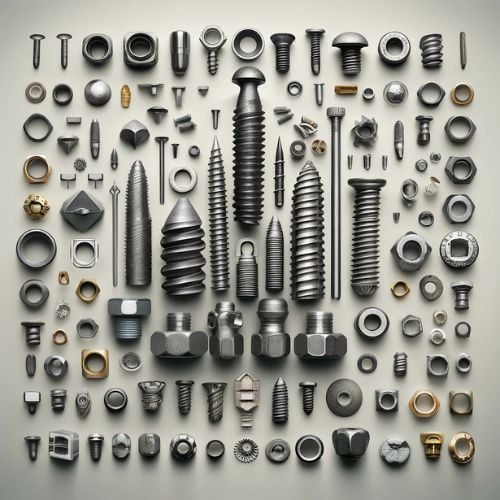Cold Heading Techniques and Their Applications in Specialty Fasteners
Cold heading is a critical process in manufacturing fasteners and other hardware. It shapes metal by reshaping the material at room temperature. This process is vital for producing high-quality, durable fasteners across various automotive, aerospace, and construction industries. Let's examine cold heading techniques and explore their specific applications in creating specialty fasteners.
What is Cold Heading?
Cold heading is a forging process where the wire is cut to a predetermined length and then formed into a desired shape using dies and tooling, all without removing any material. The "cold" refers to the metal being shaped at or near room temperature instead of heated or "hot" working. This technique allows for the efficient production of fasteners such as screws, bolts, and rivets with enhanced strength and surface finish.
Techniques in Cold Heading
Cutting the Wire: The process begins with cutting a wire to the correct length, which is determined by the size of the fastener being produced.
Heading: The cut wire is fed into a cold heading machine, where the first die starts to form the head of the fastener. Depending on the tooling used, this might be a simple flat head, a complex hexagonal shape, or any number of other profiles.
Extrusion and Upsetting: After heading, the piece may undergo extrusion, forcing it through a die to form a specific cross-section or upsetting, where the material is compacted to increase its diameter.
Pointing and Threading: The final steps in the cold heading process involve pointing, where the tip of the fastener is shaped, and threading, which involves cutting or rolling threads onto the body of the fastener.
Advantages of Cold Heading
The cold heading process offers several advantages over other metalworking techniques:
Efficiency: Cold heading is highly efficient, as it can produce components quickly and in large quantities without wasting material.
Cost-effectiveness: Less waste and the ability to use lower-cost materials make cold heading a cost-effective production method.
Strength and Durability: The cold work strengthens the metal through work hardening, resulting in fasteners that are robust and have superior fatigue resistance.
Precision: Cold heading machines can achieve high levels of precision, which is crucial for specialty fasteners that must meet specific dimensional tolerances.
Cold Heading Applications in Specialty Fasteners
Specialty fasteners are custom-designed to meet specific needs that standard fasteners cannot. These fasteners often require unique shapes, sizes, or properties. Cold heading is critical to their development due to its versatility and effectiveness.
Automotive Industry: In the automotive industry, specialty fasteners are used in engines, transmissions, and suspensions. These fasteners must withstand extreme conditions without failing. Cold heading allows for the manufacture of fasteners with enhanced mechanical properties that can tolerate high stresses and temperatures.
Aerospace Applications: Aerospace fasteners must be lightweight yet strong enough to hold aircraft components under the stresses of flight. Cold heading produces these specialty fasteners with high precision and strength, often using advanced materials like titanium.
Medical Devices: The medical field often requires miniature fasteners for devices such as implants and surgical instruments. Cold heading can produce small, complex shapes with the precision and material properties required for biocompatibility and durability.
Electronics and Telecommunications: Specialty fasteners are also used in the electronics industry, where they must be small, precise, and often non-magnetic. Cold heading produces these fasteners efficiently, allowing for consistent quality even in miniature sizes.
Construction: Specialty fasteners for construction may include anchors, bolts, and screws that require high strength and resistance to environmental factors. Cold heading can produce these fasteners with the necessary durability and at a lower cost than other methods.

The Future of Cold Heading in Fastener Manufacturing
As industries continue to demand higher-quality and more specialized components, the role of cold-working in manufacturing specialty fasteners is set to grow. Machine technology and tooling design innovations are making it possible to produce even more complex shapes and sizes. At the same time, advances in material science allow for new metal alloys that can be cold-worked.

Cold heading techniques are essential in manufacturing specialty fasteners, offering significant advantages in terms of efficiency, cost, strength, and precision. As technology advances, cold heading applications are expanding, making it a critical process in producing fasteners across various industries. By understanding and leveraging this technique, manufacturers can meet the growing demand for high-quality, durable, precision-engineered fasteners.
